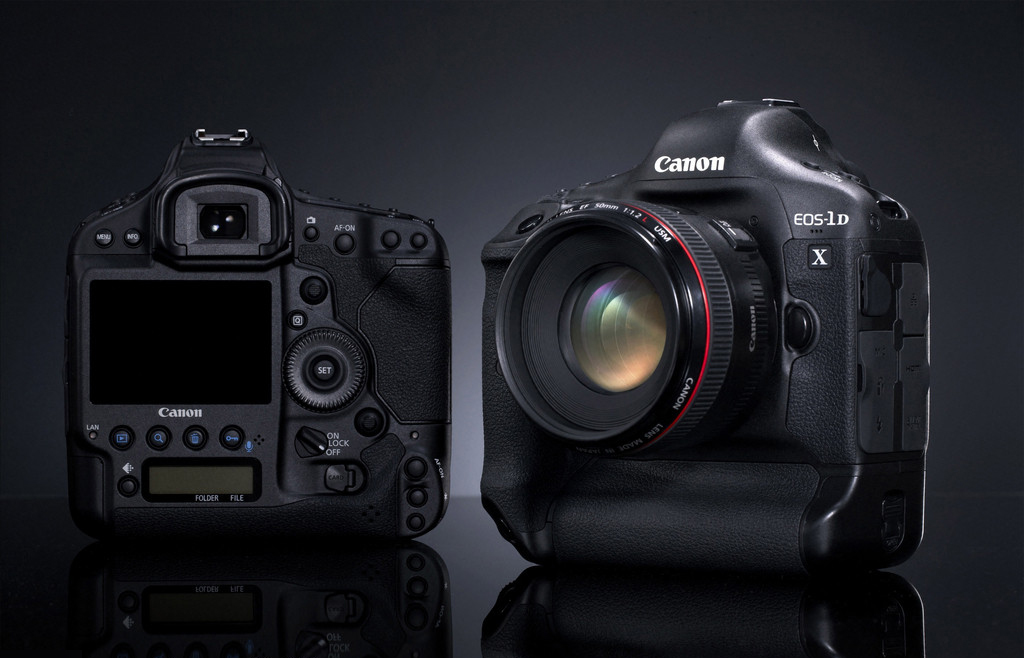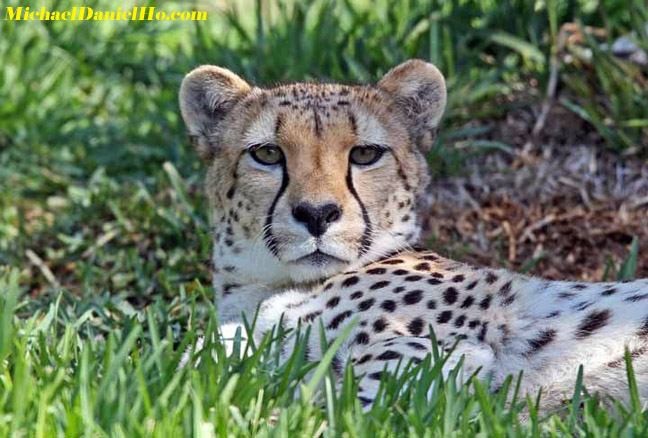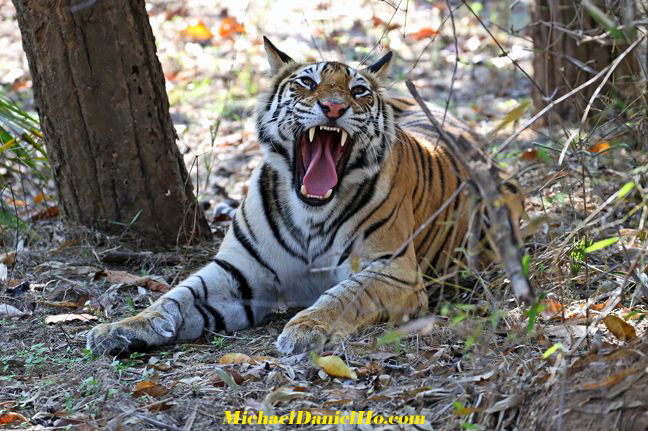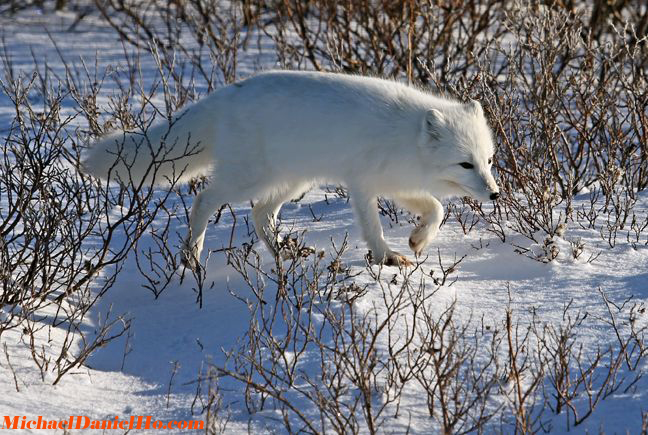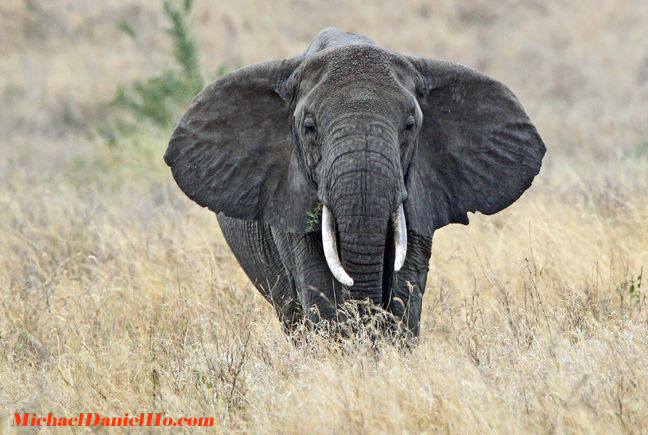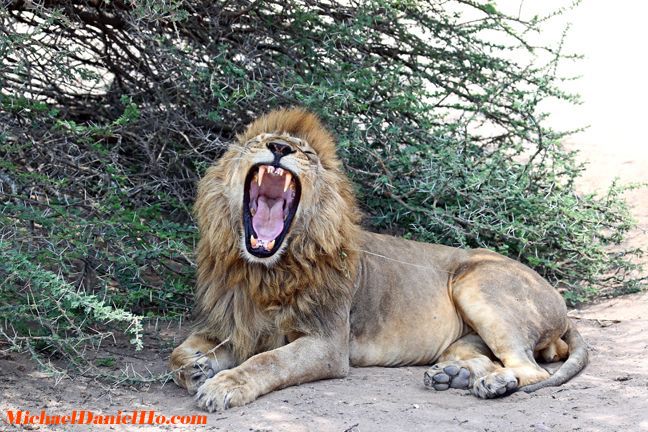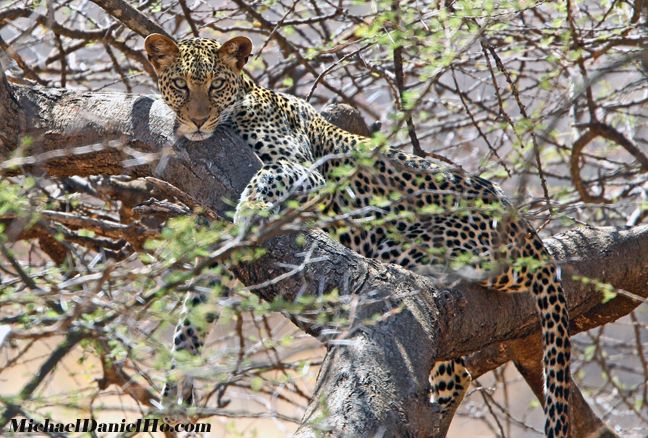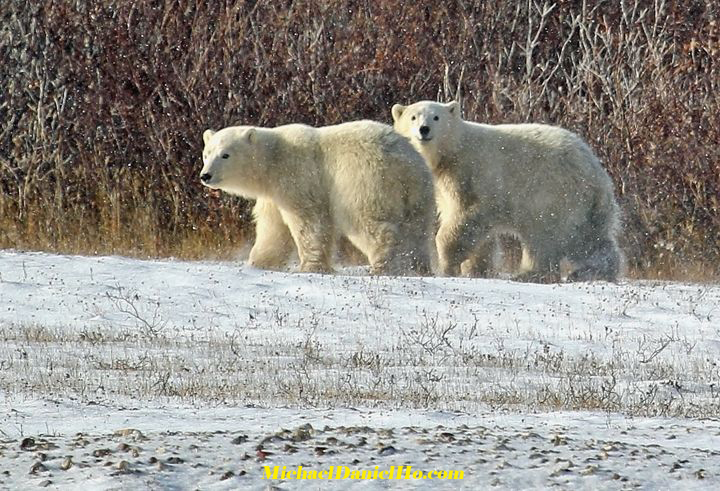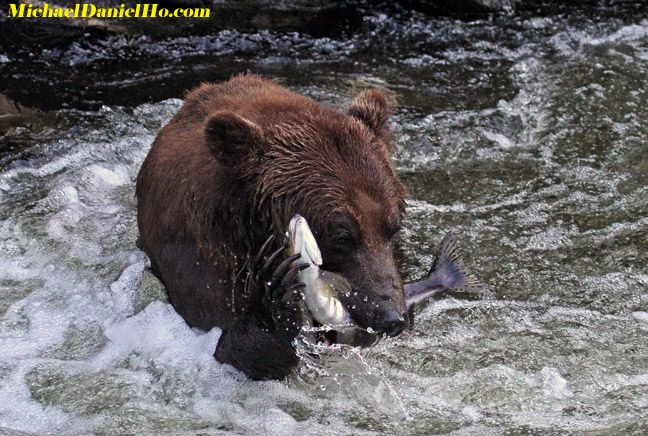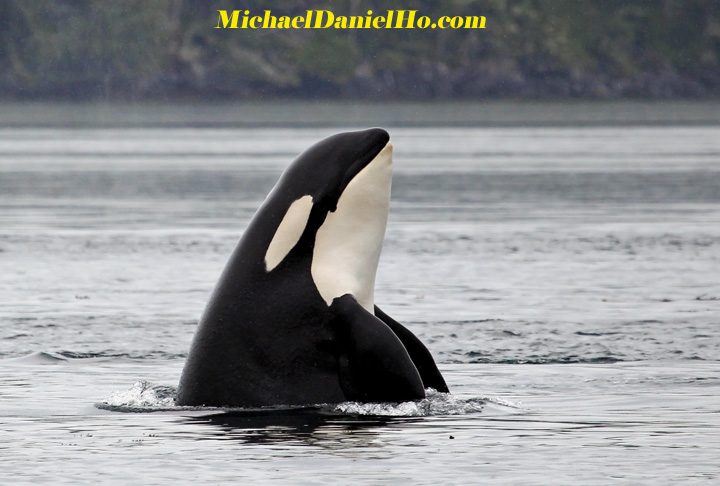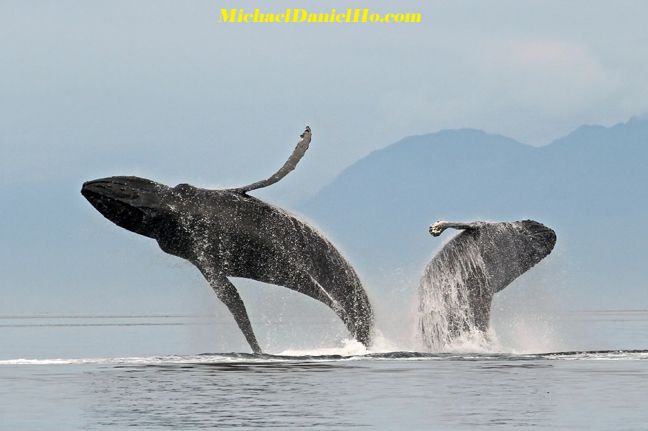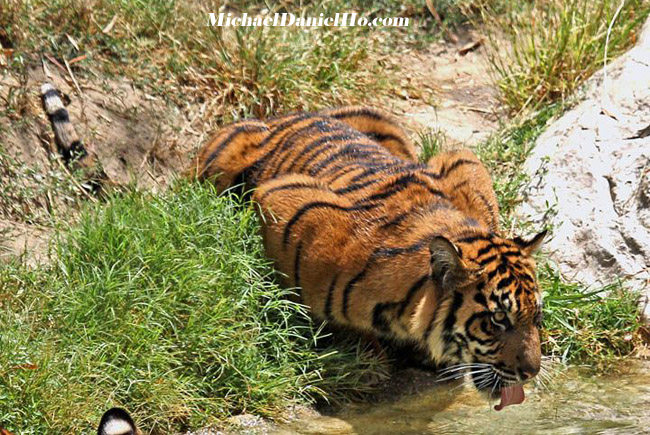In line with previous EOS-1 series cameras, the 1D-X is designed for use in harsh environments. The camera is slightly taller, the egornomics is the same and retains the dust and drip-proof construction of the Mark IV, using a total of 76 seals around buttons and body joints to help keep water and dust out. When combined with Canon L-series EF lenses, the entire package is sealed and weather resistant. The Magnesium alloy body shell stands up to heavy-duty professional use. There is a new charger (LC-E4N) and more powerful battery (LP-E4N) but the LP-E4 battery of the MK IV and the new battery are forward and backward compatible but the chargers are not.
The 1D-X has a rear LCD screen that is slightly larger and crisper than the MK IV and features a built-in RJ-45 connector for cabling directly to a LAN network. This is similar to the connector found on the Mark IV, but it is a Gigabit Ethernet port, allowing faster data transfer. The shutter durability is now rated at 400,000 cycles. There is an internal error log, which tracks all camera errors, including the number of shutter release cycles.
One of my primary concerns when I go on a photo shoot is weight and focal length. There is a direct correlation between the two. The longer the lens, the heavier the equipment. I am a wildlife and travel photographer and normally prefer to travel light, with 2 or 3 camera bodies - 1Ds MK III, 1D MK IV and 7D. With the 1D-X and 1D MK IV plus the Series III extenders, I can now get full and cropped frame shots with a focal length of 16-1000mm using the 400mm f/4L DO lens. Together with the 16-35mm f/2.8L II and the 70-200mm f/2.8L IS II or the 70-300mm f/4-5.6L IS or the 100-400mm f/4.5-5.6L IS lenses, most wildlife and travel shots can be tackled plus the entire professional package fits in my medium sized Tamrac bag and I can carry it all day without breaking my back. However, now that the Canon EF 200-400mm f/4 + 1.4X extender lens is my primary Super Telephoto lens, I carry the larger and heavier Tamrac Expedition 8X bag to accommodate the additional gear.
After using so many Canon camera models, I am not enamored of technical and marketing hype. The first thing I wanted to test is Canon's claim that the 1D-X's increased processing power, combined with the improvements in sensor design, has permitted an increase in high ISO performance with a gain of two stops over the Mark IV in the normal range (ISO 100 to 51,200) before ISO expansion. And with the dual Digic 5+ processors, unlike the Mark IV, setting High ISO noise reduction to ‘Strong' will not reduce the number of continuous shots that can be captured in a burst, up to 14fps and 10fps with ISO 32,000 or higher. For most action photographers, the realistic number is really 12 fps since the 14 fps requires the mirror lockup.
This is important because when I photograph speeding Hummingbirds and breaching Whales in poor light, shooting with the MK IV at ISO 3200+ and a f/2.8 lens produces images with unacceptable nosie level to me. If the 1D-X can shoot at high ISO settings without a fast lens and still produces photos with respectable noise level, then the upgrade will be worthwhile for me.
The second claim I want to verify is the newly designed 61 point AF system has the ability to detect extreme defocus and correct accordingly. With this increase in AF sensitivity, the 1D-X can now focus in even lower light levels than the Mark IV. Using a single central AF point with a f/2.8 lens, the 1D-X is able to focus in EV -2, equivalent to shooting under the light of the full moon.
For easier menu navigation, all AF settings and Custom Functions on the 1D-X are now grouped into one menu tab, offering 6 different cases to choose from. I find some of the options 'redundant' and offer a difference without a distinction.
The new camera is a very complex piece of gear and I am getting more and more comfortable with it and I have made use of the ability to change from one set of settings to another at the push of a button. With wildlife you never quite know when the action is going to happen, so you may be shooting with a slow shutter speed when you suddenly need a fast shutter speed to freeze the motion. By using the custom settings I can push one button and immediately switch to a different set of settings, with a fast shutter speed and higher ISO. It’s perfect for subjects that are static, but may start moving suddenly, and saves me having to look down at the camera to change settings.
My first impression of the 1D X's AF system is very good. The viewfinder is bright and AF is lighting fast even under very low light conditions. I tried to AF on many different situations and the camera locked on with little fuss. The high ISO performance is also quite impressive, much better than the MK IV. Noise at ISO 3200 is excellent, ISO 6400 and 12800 are very well under controlled. Even ISO 25600 is not too bad but I'll use ISO 51200 only in an emergency. The burst rate of 12 fps is simply music to my ears. One cannot over-emphasize the difference of 2 additional fps can make. I have gotten shots with the EOS-1D MK IV (10 fps) that I missed with the EOS-7D (8 fps). As for the image quality, there is nothing like shooting with the latest EOS-1 camera equipped with the most advanced, full frame sensor.
On the annoying side of things, all previous Canon cameras I have used, come with the blue - and + buttons to view multiple images during playback. With the 1D X, what used to take 2 steps on the MK IV to view multiple images (four) now requires 7 steps. To jump from looking at 4 images to 9 images at one time? Well, you don't even want to know the number of steps involved. If you are listening Canon, please bring back the blue - and + button in the EOS-1D X Mk II.
I am still feeling my way through the EOS-1D X, especially after the latest
Firmware 2.0.3 upgrade. As a general rule, I never use the Owner's manual with any new camera. Want to see how well a piece of equipment has been engineered and how intuitive it can be from the stand point of the user. This new camera will take me a little bit longer to get used to but I am rather impressed by it so far. I am not into shooting videos so I have no opinion on that part of the camera but judging from my EOS-7D and 1D MK IV's video performances, it should be very good indeed.
The EOS-1D X continues to dazzle me, especially its high ISO performance. Visit my
Blog to read the second review of the camera's performance on Travel Photography. I have taken the EOS-1D X to Central and South America, Asia, Europe, Alaska, the Canadian tundra, the High Arctic, Hawaii and Africa to photograph all sorts of wildlife and travel images under many different challenging conditions. The camera holds up very well under severely cold or hot temperatures and wetness and the new LP-E4N battery performed with no degradation of power at all. I am quite happy with the EOS-1D X camera.
The Mk II version of this camera should be out the last half of 2015. Read my
blog post on the latest information.
Canon has also released the
EOS-7D Mk II camera as well. This is an excellent APS-C cropped frame body well suited for sports and wildlife photography.
You can view some of the images
here and
here and under the
Animals and
Birds sections on my website.
Follow me on
Facebook ,
Twitter ,
Flickr
and my
Blog to keep up with my travels and photo shoots with the EOS-1D X, EOS-7D Mk II, EF 200-400mm f/4L IS USM Extender 1.4x, EF 400mm f/4 DO IS II and EF 100-400mm f/4.5-5.6L IS II lenses and join me on my
photo trips.

